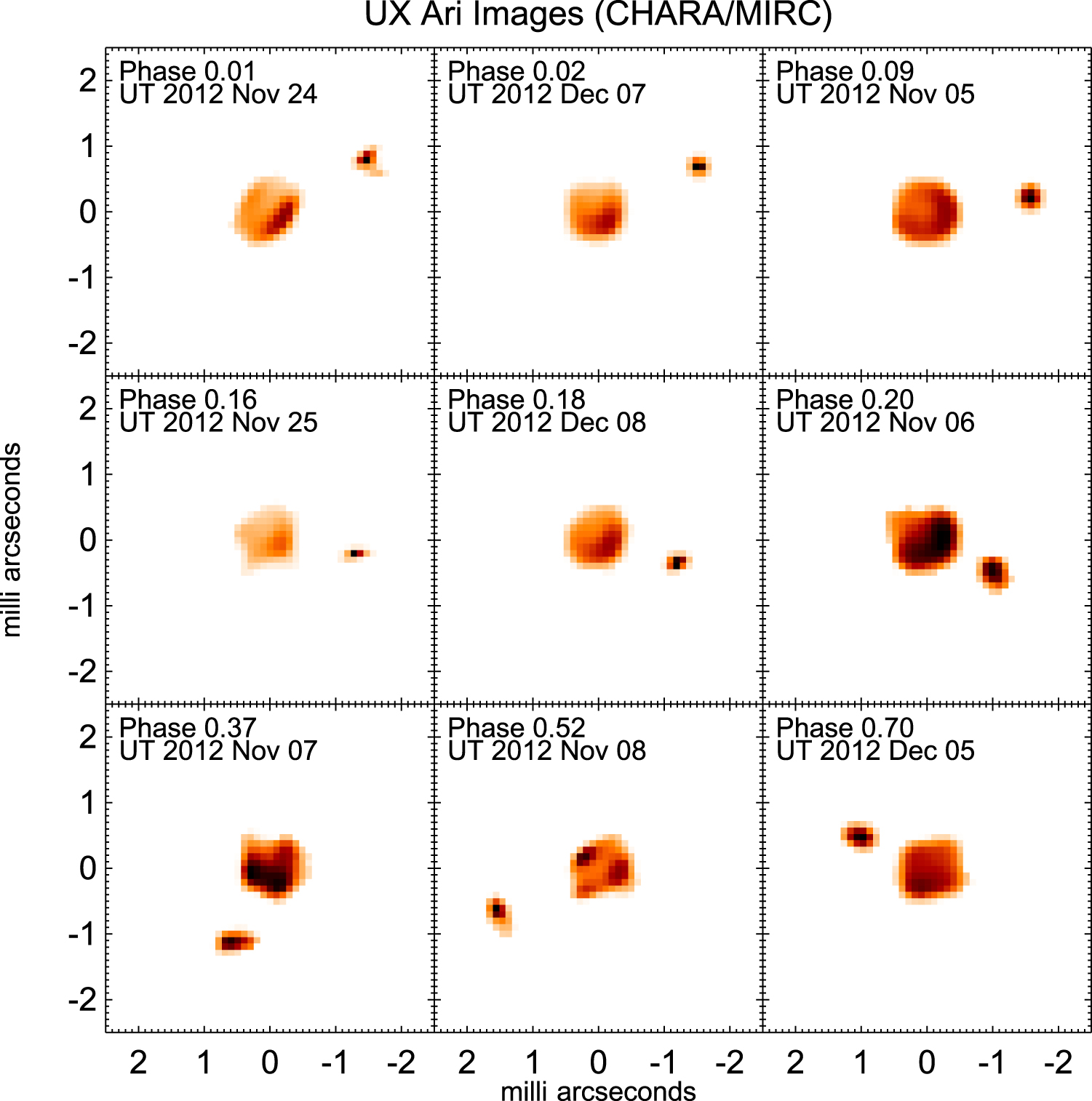
Stellar activity observed as large surface spots, radio flares, or emission lines is often found in binary systems. UX Arietis exhibits these signs of activity, originating on the K0 subgiant primary component. The CHARA Array was used to map the orbital motion and resolve the two components of the binary.
The CHARA images display prominent spot activity on the resolved primary component. At similar orbital phases of the clearly visible secondary component, e.g., on November 24 and December 7 or on November 25 and December 8, a single large spot appears in the same place, indicative of one (or more) spots not moving in the corotating reference frame of the binary.

Model images of the spot at phase zero (left, inferior conjunction of secondary in front of primary) corresponding to maximum light in 2013 and at phase 0.5 (right) corresponding to minimum light in 2012.
Reference:
Orbital Elements and Stellar Parameters of the Active Binary UX Arietis
Hummel, C. A., et al., 2017, Astrophysical Journal, 844, 115



